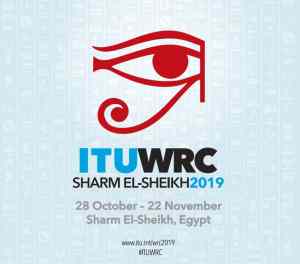Early Progress, Contention on Difficult Issues Mark First Week of WRC
The early decisions here in Sharm El-Sheikh were only possible because of countless hours of work conducted within the ITU Radiocommunication Sector and the six regional telecommunications organizations (RTOs) since the previous WRC in 2015. Three of these decisions were on issues of interest to the IARU.
The band 47.0-47.2 GHz was allocated solely to the amateur and amateur-satellite services by the 1979 World Administrative Radio Conference. Commercial wireless broadband interests had expressed some interest in the band being designated for International Mobile Telecommunications (IMT) and there was some concern that such a proposal might be made at WRC-19. The fact that none was forthcoming was due in part to the work of the IARU at the Conference Preparatory Meeting earlier this year and in the RTOs. The WRC has agreed to “no change” (NOC) at 47.0-47.2 GHz.
Another NOC decision that avoided impact on the amateur service applies to the band 5850-5925 MHz, which is an amateur secondary allocation in Region 2. Consideration of proposals involving other parts of spectrum in the 5-GHz range will take much longer.
Finally, the WRC has agreed to make no frequency allocations or other changes to the Radio Regulations to accommodate Wireless Power Transmission for electric vehicles (WPT-EV). Much more work remains to be done on an urgent basis in the ITU and other standards organizations if radiocommunication services are to be adequately protected from harmful interference that may be generated by WPT-EV, both at the fundamental frequency and from unwanted emissions.
One of the most difficult issues facing WRC-19 is to develop an agenda for WRC-23. There are dozens of proposals for agenda items and they cannot all be accommodated within available ITU resources. The substantive work of considering these proposals began on Friday afternoon and must be completed over the next two weeks.
Some meetings on the more difficult issues are scheduled for Saturday, November 2. Delegates have been warned to expect more intensive use of weekend and evening hours as the conference proceeds toward its conclusion on November 22.
Source IARU http://iaru.org/
CEPT ECC report on WRC-19 Week 1
https://www.cept.org/ecc/groups/ecc/cpg/client/introduction/weekly-report-from-wrc-19
For daily updates see the RSGB WRC-19 Blog
https://rsgb.org/main/blog/category/news/special-focus/wrc-19/
Get The Details…
m5aka AMSAT-UK
Powered by WPeMatico



 Sharm El-Sheikh, Egypt, November 1, 2019 – Week 1 of the 2019 World Radiocommunication Conference saw agreement reached on several issues on which discussions prior to the conference had revealed consensus. Those were the easy ones; the rest will be more difficult.
Sharm El-Sheikh, Egypt, November 1, 2019 – Week 1 of the 2019 World Radiocommunication Conference saw agreement reached on several issues on which discussions prior to the conference had revealed consensus. Those were the easy ones; the rest will be more difficult. Consideration of a 50 MHz allocation in Region 1 to harmonize the allocations in the three Regions was the subject of spirited debate in a Sub Working Group chaired by Dale Hughes, VK1DSH, of the Australian delegation. The four RTOs in Region 1 made disparate proposals to the conference and a small group of administrations proposed NOC. For three days there was no progress toward a consensus solution but that changed on Friday morning. An agreement has been reached, subject to confirmation by the regional groups, that will provide administrations in Region 1 with flexibility in how to accommodate their amateurs.
Consideration of a 50 MHz allocation in Region 1 to harmonize the allocations in the three Regions was the subject of spirited debate in a Sub Working Group chaired by Dale Hughes, VK1DSH, of the Australian delegation. The four RTOs in Region 1 made disparate proposals to the conference and a small group of administrations proposed NOC. For three days there was no progress toward a consensus solution but that changed on Friday morning. An agreement has been reached, subject to confirmation by the regional groups, that will provide administrations in Region 1 with flexibility in how to accommodate their amateurs.
